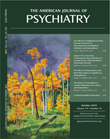Social Risk or Genetic Liability for Psychosis? A Study of Children Born in Sweden and Reared by Adoptive Parents
Abstract
Objective:
Method:
Results:
Conclusions:
Method
Study Population
Swedish-born intracountry adoptees.
| Classification | ICD-8 (1973–1986) | ICD-9 (1987–1996) | ICD-10 (1997–2006) |
|---|---|---|---|
| Nonaffective psychosis Exposureb | 295, 297, 298.20–298.99, 299.99 | 295, 297, 298C–X | F20–F29 |
| Genetic liability (adoptees) and familial history of psychosis (nonadoptees) | 295, 296.1–296.88, 297, 298.20–298.99, 299.99 | 295, 296C–W, 297, 298C–X | F20–F29, F31, F302, F323, F333 |
| Any psychiatric diagnosis | 290–315 | 290–319 | F0–F999 |
Swedish-born nonadoptees.
Exposure and Outcome Measures
Statistical Methods
Results
Population of Swedish-Born Intracountry Adoptees
Incidence Rates of Nonaffective Psychosis
| Socioeconomic Position of the Rearing Family | No Genetic Liability for Psychosis (N=12,218) | Genetic Liability for Psychosis (N=898) | ||||
|---|---|---|---|---|---|---|
| Cases (N=175) | Person-Years at Risk | New Cases Per 1,000 Person-Years at Risk | Cases (N=55) | Person-Years at Risk | New Cases Per 1,000 Person-Years at Risk | |
| Parental employment | ||||||
| Employed | 167 | 322,205 | 0.52 | 51 | 21,133 | 2.41 |
| Unemployed | 8 | 6,850 | 1.17 | 4 | 390 | 10.26 |
| Household | ||||||
| Two-parent | 167 | 318,839 | 0.52 | 49 | 20,666 | 2.37 |
| Single-parent | 8 | 10,216 | 0.78 | 6 | 857 | 7 |
| Housing | ||||||
| Own house | 79 | 164,882 | 0.48 | 31 | 12,496 | 2.48 |
| Apartment | 96 | 163,497 | 0.59 | 24 | 8,999 | 2.67 |
Risk Analyses
| Indicators of Both Socioeconomic Position and Genetic Liability | Hazard Ratio | 95% CI | Synergy Index | 95% CI |
|---|---|---|---|---|
| Parental employment | ||||
| Parent employed, genetic liability absent | 1.0b | |||
| Parent employed, genetic liability present | 4.4 | 3.2–6.1 | ||
| Parent unemployed, genetic liability absent | 2 | 1.0–4.2 | ||
| Parent unemployed, genetic liability present | 15 | 5.4–42.3 | 3.19 | 1.01–10.07 |
| Household | ||||
| Two-parent household, genetic liability absent | 1.0b | |||
| Two-parent household, genetic liability present | 4.3 | 3.1–6.0 | ||
| Single-parent household, genetic liability absent | 1.2 | 0.6–2.6 | ||
| Single-parent household, genetic liability present | 10.3 | 4.4–23.8 | 2.63 | 0.97–7.11 |
| Housing | ||||
| Own house, genetic liability absent | 1.0b | |||
| Own house, genetic liability present | 4.7 | 3.1–7.2 | ||
| Apartment, genetic liability absent | 1.3 | 1.0–1.8 | ||
| Apartment, genetic liability present | 5.7 | 3.6–9.0 | 1.16 | .061–2.23 |
Population of Swedish-Born Nonadoptees
Risk Analyses
Discussion
Strengths and Limitations
Conclusions
Acknowledgments
Footnote
References
Information & Authors
Information
Published In
History
Authors
Funding Information
Metrics & Citations
Metrics
Citations
Export Citations
If you have the appropriate software installed, you can download article citation data to the citation manager of your choice. Simply select your manager software from the list below and click Download.
For more information or tips please see 'Downloading to a citation manager' in the Help menu.
View Options
View options
PDF/EPUB
View PDF/EPUBLogin options
Already a subscriber? Access your subscription through your login credentials or your institution for full access to this article.
Personal login Institutional Login Open Athens loginNot a subscriber?
PsychiatryOnline subscription options offer access to the DSM-5-TR® library, books, journals, CME, and patient resources. This all-in-one virtual library provides psychiatrists and mental health professionals with key resources for diagnosis, treatment, research, and professional development.
Need more help? PsychiatryOnline Customer Service may be reached by emailing [email protected] or by calling 800-368-5777 (in the U.S.) or 703-907-7322 (outside the U.S.).

